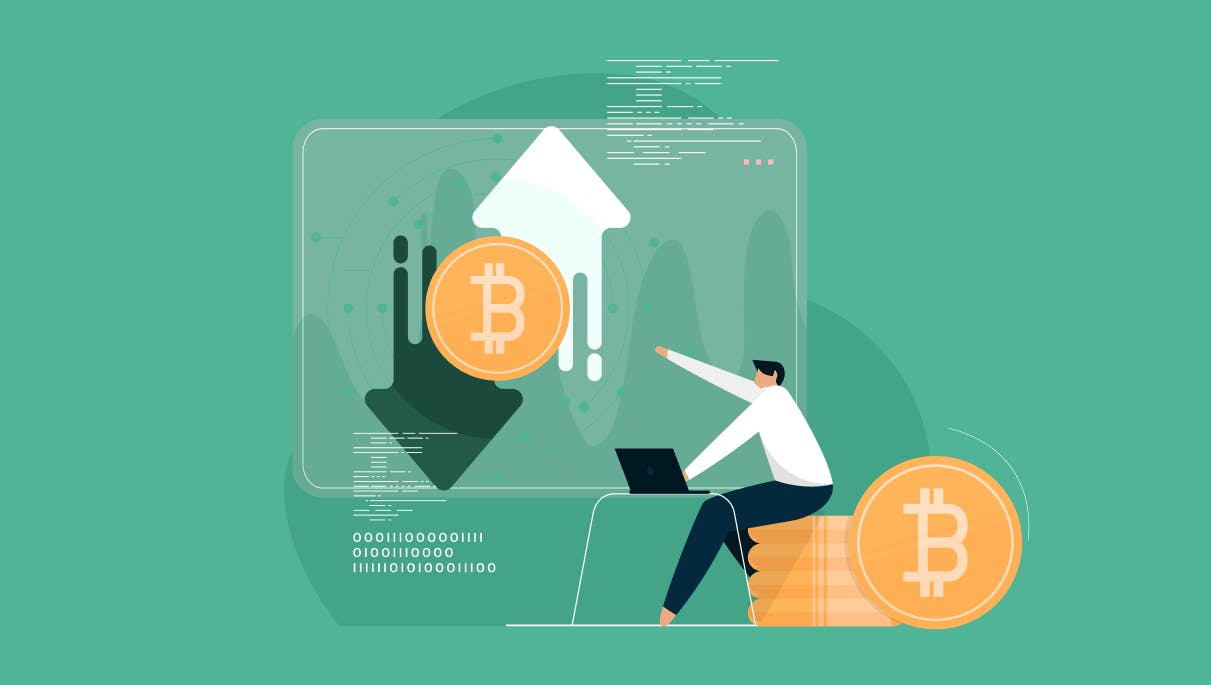How Bitcoin Transactions Work
On this page
Share this article
Bitcoin has existed for over a decade and, in that time, has gained widespread popularity around the world. This has made many curious about how bitcoin actually works and how it operates. Bitcoin is characterised by its decentralised feature and how it is able to validate transactions that cannot be recreated thus eliminating fraud cases like double-spend. However, to understand this, you need to know how bitcoin transactions work. But firstly, before we get to that, we need first to know how bitcoin mining works.
What is bitcoin mining?
Bitcoin mining is the bedrock on which bitcoin lies. It is responsible for the security of bitcoin and the introduction of new blocks. This means that bitcoin would be prone to risks without miners, and it would be impossible to access the only 21 million bitcoins that can exist. Bitcoin mining is achieved through the use of complex machines to process every bitcoin transaction. Miners earn a reward for their service to bitcoin, which could be in the form of new coins or transaction fees.
Mining is essential for issuing new bitcoins. Central authorities (the bank) are responsible for introducing new currencies into the economy at a particular period when they believe it is vital for the economy. In this regard, miners act as issuers and introduce new bitcoins into the blockchain system.
Miners are also crucial for confirming and validating transactions. A bitcoin transaction is only considered valid when it has been introduced into the block. This is because it is only when it has been introduced into the block that it gets added into the bitcoin blockchain. While Bitcoin mining is lucrative as miners are rewarded, it requires specialised skills. You would need to solve computerised mathematical puzzles using powerful computer machines known as an application-specific integrated circuit (ASIC) with powerful CPUs and graphics cards.
How does a transaction get into the blockchain?
All blocks embedded in the blockchain need to be authorised, verified, and authenticated. This means a transaction has to go through specific steps before it can be added to the blockchain. In a traditional financial institution with fiat money, central authorities (such as banks) are responsible for validating transactions. However, Bitcoin is able to achieve authentication on the blockchain with the use of cryptographic keys.
Computer nodes (users) can validate a transaction using Proof of Work (PoW). Proof of Work is a consensus mechanism employed on the blockchain that helps users come to an agreement on the running and decision making for the bitcoin blockchain system. For this to happen, a majority of computer nodes must agree that the transaction is valid.
The process is relatively straightforward to add a transaction to the bitcoin blockchain network. Firstly, a transaction is put up to be validated and authenticated. A block that would represent this transaction is created and sent across to all computer nodes (users). The nodes reach a consensus to either validate or dismiss a block. If it gets validated, an update with the block is distributed across the network and embedded in the blockchain. Computer nodes that participated in the authentication process are then rewarded.
A practical illustration of how bitcoin transactions work
For instance, you may wish to send some bitcoin to your colleague, James. The bitcoin transaction you are about to initiate would comprise three main features. The first is the input; this is a record of how the BTC came to be in your bitcoin wallet. It would also state the amount that you wish to send to James and, finally, James’ public key or bitcoin address.
In order to complete the transactions, you would need to use your private keys to sign an approval for the transaction to James’ public address. Once it receives approval from your private key, the blockchain broadcasts the transaction to the bitcoin network. The miners then verify that James’ public address can access the amount of BTC you wish to send, which had been sent to your wallet from another source. That is, they trace the BTC from its initial source before it entered your wallet and see if James’ key can access the input.
The process through which this transaction is confirmed and authenticated is mining. It is important to note that miners do not mine transactions but rather mine blocks that contain several transactions. This also explains why there may be some delay in processing bitcoin transactions. This is because your transaction may be put on hold if the current block has a specific limit of transactions that are being processed. This means your transaction would be delayed till the next block is assembled.
However, to ensure that these transactions do not take much of your time, the bitcoin protocol is designed to allow each block to take about 10 minutes to mine. However, with the bitcoin scalability proposals ongoing, the blocks could be scaled to handle more than one 1MB at a time.
Final Note
Miners play an integral role in running the bitcoin protocol as they help verify and authenticate transactions for a new reward. Through the mining process, miners can issue new bitcoins into the coin. The mining process helps to secure the bitcoin network and prevents fraudulent schemes. It is vital that you secure your private keys and public keys to enable bitcoin transactions and remember to use a trusted wallet to protect your details.
Disclaimer: This article is meant to provide general guidance and understanding of cryptocurrency and the Blockchain network. It’s not an exhaustive list and should not be taken as financial advice. Yellow Card Academy is not responsible for your investment decisions.


Crypto scoop
Sign up for our weekly newsletter
Stay informed with the latest updates to buy, sell, and store your crypto on the go.

Download the Yellow Card app
Start trading crypto with ease
Get the Yellow Card app to buy, sell, and store your crypto on the go.


